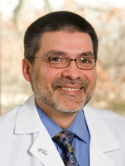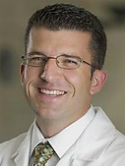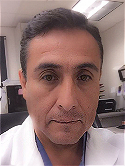In vivo imaging characterization of basal cell carcinoma and cutaneous response to high-dose ionizing radiation therapy: A prospective study of reflectance confocal microscopy, dermoscopy, and ultrasonography Journal Article
| Authors: | Navarrete-Dechent, C.; Cordova, M.; Liopyris, K.; Aleissa, S.; Rajadhyaksha, M.; Cohen, G.; Marghoob, A. A.; Rossi, A. M.; Barker, C. A. |
| Article Title: | In vivo imaging characterization of basal cell carcinoma and cutaneous response to high-dose ionizing radiation therapy: A prospective study of reflectance confocal microscopy, dermoscopy, and ultrasonography |
| Abstract: | Background: Radiation therapy (RT) is a treatment option for select skin cancers. The histologic effects of RT on normal skin or skin cancers are not well characterized. Dermoscopy, high-frequency ultrasonography (HFUS), and reflectance confocal microscopy (RCM) are noninvasive imaging modalities that may help characterize RT response. Objectives: To describe changes in the tumor and surrounding skin of patients with basal cell carcinoma (BCC) treated with RT. Methods: The study was conducted between 2014 and 2018. Patients with biopsy-proven BCCs were treated with 42 Gy in 6 fractions using a commercially available brachytherapy device. Dermoscopy, HFUS, and RCM were performed before treatment and at 6 weeks, 3 months, and 12 months after RT. Results: A total of 137 imaging assessments (RCM + dermoscopy + HFUS) were performed in 12 patients. BCC-specific features were present in 81.8%, 91%, and 17% of patients imaged with dermoscopy, RCM, and HFUS at baseline, respectively, before treatment. After treatment, the resolution of these features was noted in 33.4%, 91.7%, and 100% of patients imaged with the respective modalities. No recurrences were seen after a mean of 31.7 months of follow-up. Limitations: Small sample size and no histopathologic correlation. Conclusion: Dermoscopy and HFUS were not as reliable as RCM at characterizing BCC RT response. © 2020 American Academy of Dermatology, Inc. |
| Keywords: | dermoscopy; reflectance confocal microscopy; basal cell carcinoma; radiotherapy; brachytherapy; dermatoscopy; surgery; radiation therapy |
| Journal Title: | Journal of the American Academy of Dermatology |
| Volume: | 84 |
| Issue: | 6 |
| ISSN: | 0190-9622 |
| Publisher: | Mosby Elsevier |
| Date Published: | 2021-06-01 |
| Start Page: | 1575 |
| End Page: | 1584 |
| Language: | English |
| DOI: | 10.1016/j.jaad.2020.07.130 |
| PUBMED: | 32827607 |
| PROVIDER: | scopus |
| PMCID: | PMC7892640 |
| DOI/URL: | |
| Notes: | Article -- Export Date: 1 June 2021 -- Source: Scopus |
Altmetric
Citation Impact
BMJ Impact Analytics
MSK Authors
Related MSK Work










